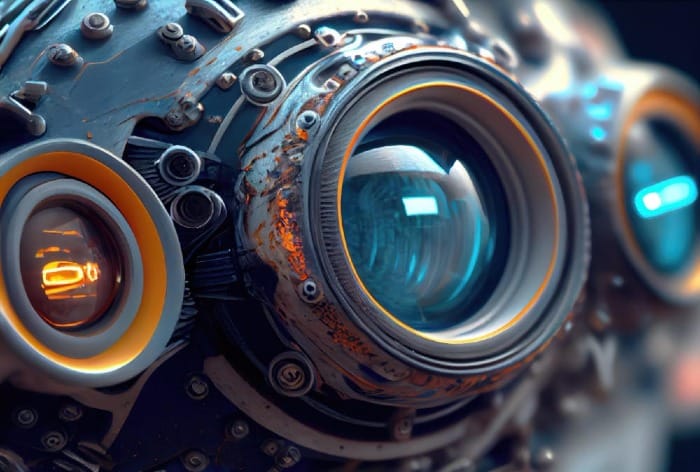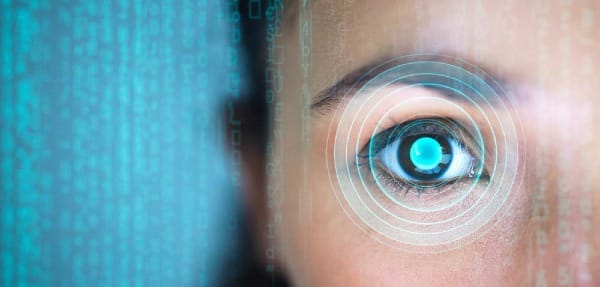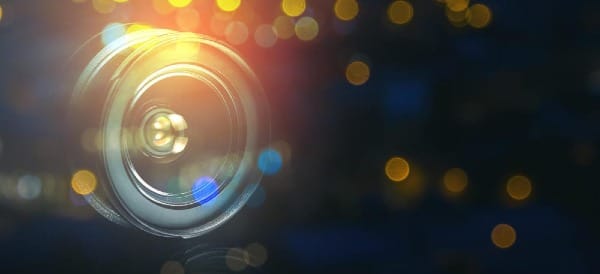Introduction
In the world of photography, advancements in technology have consistently shaped the way we capture and experience images. From the early days of film photography to the digital revolution, each leap forward has brought new capabilities and creative opportunities. Today, we are witnessing yet another transformation—the integration of artificial intelligence (AI) into modern cameras, giving rise to AI-powered photography.
Unlike traditional cameras, which rely solely on the photographer’s manual skills and settings, AI-powered cameras use advanced algorithms to make real-time decisions about exposure, focus, and even composition. This shift marks a significant change in how both amateur and professional photographers approach their craft. With the introduction of AI, cameras can now intelligently recognize scenes, adjust settings for optimal results, and even suggest improvements on the spot, creating a seamless blend between human creativity and machine intelligence.
AI-powered photography is not just about automation—it's about enhancing creativity, improving efficiency, and making high-quality photography more accessible to everyone. From smartphones that can detect and adjust to different lighting conditions, to professional DSLR and mirrorless cameras that can track subjects with precision, AI is reshaping how we think about image-making. Whether you’re capturing the perfect portrait, shooting in low-light conditions, or filming dynamic action scenes, AI takes the guesswork out of technical settings, allowing you to focus more on the story you want to tell.
This post will dive deep into how AI-powered cameras are revolutionizing the field, exploring the key features, benefits, and challenges they bring to the world of smart photography.

What Are AI-Powered Cameras?
AI-powered cameras represent a significant technological leap in photography, as they utilize artificial intelligence to enhance image quality and automate many of the tasks that traditionally required manual intervention by photographers. By incorporating advanced machine learning algorithms and real-time processing capabilities, these cameras are able to analyze scenes, recognize objects, and adjust settings on the fly to achieve the best possible shot.
Definition and Overview
AI-powered cameras go beyond the basic automatic settings like exposure, aperture, and shutter speed that have been standard in cameras for years. These cameras use AI-driven software and computational models to:
- Analyze the environment: Recognize elements like lighting, motion, and objects in real-time.
- Make intelligent decisions: Automatically adjust focus, exposure, and white balance based on the detected scene or subject.
- Enhance image processing: Apply sophisticated techniques such as noise reduction, sharpening, and even beautification (in portrait modes) to optimize the final image.
The AI processes occurring inside the camera work so quickly and seamlessly that the user often doesn’t realize it’s happening—making photography more intuitive and accessible, even for those without technical expertise.
Core Features of AI-Powered Cameras
AI-powered cameras come equipped with several cutting-edge features designed to improve both image capture and quality:
- Scene Recognition: One of the most significant AI-driven capabilities is the camera’s ability to recognize specific scenes and subjects—like landscapes, people, food, or animals—and adjust its settings accordingly. For example, the camera will optimize brightness, contrast, and color for a sunset or increase sharpness and focus for action shots.
- Real-Time Adjustments: Unlike traditional cameras that require manual changes for each condition, AI-powered cameras continuously analyze the environment and make adjustments in real-time. This is particularly useful in dynamic environments where lighting and focus can change quickly, such as outdoor events or sports photography.
- Object Detection and Tracking: AI can identify and track moving subjects, such as people or animals, ensuring that the subject stays in focus and is perfectly framed throughout the shoot. Advanced AI systems can even detect specific features like eyes or faces, prioritizing these areas to maintain sharp focus.
- Smart Composition Assistance: AI can analyze the framing and composition of a shot, offering suggestions for cropping or aligning the shot in a more visually appealing way. This takes traditional “rule of thirds” or golden ratio composition and embeds it within the camera’s functionality, giving users instant feedback.
- Depth Mapping and Bokeh Effects: AI allows cameras to create artificial depth maps, enabling features like portrait mode or bokeh effects. By separating the foreground subject from the background, AI mimics the effect of using a fast aperture lens, producing images with soft, out-of-focus backgrounds, even on devices like smartphones.

Devices that Use AI-Powered Cameras
AI-powered cameras are being integrated into a wide range of devices, from everyday smartphones to professional-grade cameras:
- Smartphones: Modern smartphones, such as those from Apple, Google, and Samsung, heavily rely on AI to enhance mobile photography. Features like night mode, portrait mode, and scene detection are all powered by AI, enabling users to take stunning photos without any manual adjustments.
- DSLR and Mirrorless Cameras: Camera manufacturers such as Canon, Sony, and Nikon have incorporated AI features into their high-end DSLR and mirrorless cameras. These features include eye-tracking autofocus, intelligent subject recognition, and real-time scene analysis for adjusting settings based on the environment.
- Drones and Action Cameras: Devices like DJI drones use AI for features such as object tracking, obstacle avoidance, and autonomous flight modes that enable smooth and dynamic aerial photography without user intervention. Similarly, action cameras like the GoPro use AI to stabilize footage and enhance image quality in fast-paced environments.
Advantages of AI-Powered Cameras
AI-powered cameras offer numerous benefits that transform the photography experience:
- Ease of Use for Beginners: AI simplifies photography for novices, as the camera handles complex settings automatically. Users no longer need to understand advanced photography techniques to capture professional-quality images.
- Time-Saving for Professionals: For experienced photographers, AI can streamline workflows by reducing the need for post-processing and manual adjustments during shoots. Features like auto-focusing, scene recognition, and real-time adjustments make it easier to capture stunning images in a shorter amount of time.
- Enhanced Image Quality: AI helps optimize images in a way that even expert photographers might struggle to achieve manually. From improving low-light performance to intelligently correcting exposure, AI enhances the overall quality of the final shot.
- Greater Creative Freedom: By handling technical aspects automatically, AI gives photographers the freedom to focus more on the creative side of photography—like storytelling, emotion, and composition—without being bogged down by technicalities.
How AI Cameras Differ from Traditional Automatic Cameras
While traditional cameras have had automatic modes for years, AI-powered cameras take it several steps further by incorporating:
- Contextual Understanding: AI doesn’t just set a generic “auto mode” but actually understands the context of the scene or subject, leading to more nuanced adjustments.
- Learning Capability: Many AI-powered systems improve over time by analyzing thousands of images and patterns, making them more accurate and responsive as they accumulate more data.
- Integration with Machine Learning: AI cameras use machine learning algorithms to recognize objects, scenes, and conditions—learning from past captures to continuously enhance future shots.
Advanced AI Features in Professional Cameras
AI has revolutionized professional photography by introducing cutting-edge features that elevate the capabilities of modern DSLR, mirrorless, and high-end video cameras. These advanced AI-driven features make capturing complex scenes easier, more efficient, and more precise, allowing professional photographers to focus on their creative vision while the camera handles many of the technical aspects.

AI-Based Autofocus (AF)
One of the most transformative AI features in professional cameras is AI-powered autofocus. Traditional autofocus systems rely on contrast or phase-detection methods, but AI introduces a layer of intelligence that enhances speed, accuracy, and subject detection.
- Eye and Face Detection AF: AI-powered cameras, such as those from Sony (Alpha series) and Canon (EOS R series), can detect and track human faces and eyes with extreme precision. This feature is especially useful for portrait photography, as it ensures that the subject’s eyes remain in sharp focus, even if they move within the frame. This eliminates the need for manual focus adjustments, making it ideal for fast-paced environments like weddings or fashion shoots.
- Animal and Object Detection: Beyond humans, AI-based autofocus can also detect and track animals, birds, or moving objects, making it an invaluable tool for wildlife and sports photography. Cameras like the Sony A7R V and Canon EOS R5 have advanced algorithms that distinguish between different species of animals, ensuring sharp focus during action-packed moments in nature or sports events.
- Real-Time Tracking AF: AI enables continuous tracking of subjects, even in challenging scenarios like low light or fast motion. Real-time tracking ensures that the camera adjusts focus dynamically as the subject moves, maintaining a crisp and clear image throughout the shoot. This is particularly useful in action and street photography, where movement is unpredictable.
AI for Motion Photography
Capturing movement, whether in sports, dance, or wildlife, can be challenging. AI brings unprecedented precision to motion photography by predicting movement patterns and optimizing camera settings accordingly.
- Motion Prediction Algorithms: AI can analyze the speed and trajectory of moving subjects to predict their next movement, allowing the camera to adjust focus and exposure in advance. This ensures that even fast-moving subjects remain in focus, reducing the chance of blurred images. Sports photographers, for example, benefit greatly from this when trying to capture athletes mid-action.
- High-Speed Burst Mode with AI: Professional cameras equipped with AI can combine high-speed burst mode with intelligent motion tracking, enabling photographers to shoot multiple frames per second while the camera automatically selects the sharpest and most well-composed shots. This feature is often used in wildlife or sports photography, where critical moments unfold in split seconds.
Enhanced Dynamic Range and Image Optimization
AI enhances dynamic range by intelligently optimizing exposure, color, and tone across different lighting conditions. This is particularly useful in environments with extreme contrasts, such as sunsets, backlit portraits, or night photography.
- AI-Enhanced HDR (High Dynamic Range): AI allows cameras to intelligently combine multiple exposures into a single image with optimal lighting across the entire frame. Traditional HDR often requires manual bracketing, but AI can automate this process by analyzing the scene and adjusting exposures in real-time, ensuring that highlights, shadows, and mid-tones are balanced without losing detail. Sony’s Real-time HDR and Canon’s AI-powered HDR modes are prime examples of this.
- Noise Reduction with AI: In low-light conditions, images often suffer from noise (graininess). AI-powered cameras can use machine learning algorithms to reduce noise while preserving details, even at high ISO levels. This is crucial for night photographers or concert photographers, who need to capture sharp images in dark environments without compromising on quality.
AI-Assisted Composition and Framing
AI is now stepping into the realm of creative decisions, helping photographers make better choices about composition and framing.
- Automatic Composition Suggestions: AI can analyze the elements in the frame—such as leading lines, subjects, and background—and suggest changes to improve composition. This might include recommendations for cropping, adjusting the angle, or following the rule of thirds. This feature assists photographers in real-time by guiding them to create more balanced and aesthetically pleasing shots.
- Automatic Horizon Correction: AI-powered cameras can detect the horizon and automatically adjust the tilt to ensure a level shot, particularly useful in landscape or architectural photography. This helps save time in post-production by ensuring straight lines and aligned perspectives directly in the camera.
Depth Mapping and Bokeh Simulation
AI has revolutionized how cameras handle depth of field, making it possible to create professional-grade bokeh (the aesthetic quality of the blur in out-of-focus areas) effects in cameras of all types, even in smartphones and mirrorless cameras with smaller sensors.
- AI-Driven Depth Mapping: AI uses advanced depth-sensing technology to analyze distances between objects in the frame. This allows for realistic bokeh effects, even without using expensive fast-aperture lenses. By simulating a shallow depth of field, AI-powered cameras blur the background while keeping the subject in sharp focus, enhancing portrait shots or macro photography.
- Portrait Modes and Selective Focus: AI allows for selective focus adjustments after the image has been captured. Cameras with this feature can refocus certain elements within the frame or enhance the depth-of-field effect, enabling a level of post-capture flexibility that was previously impossible without software.

AI in Professional Video Recording
In addition to still photography, AI has made significant advancements in video recording, helping professional videographers capture higher-quality footage with less manual intervention.
- AI-Powered Stabilization: AI helps stabilize handheld footage, particularly in situations where gimbals or tripods aren’t available. AI-driven stabilization systems like those in the Sony A7S III or Canon R5 adjust for both small and large movements, ensuring smooth video even when the camera is in motion.
- AI-Enhanced Autofocus in Video: Just as in still photography, AI-powered autofocus in video recording tracks moving subjects, ensuring they remain in focus even when they’re constantly changing position. This is especially useful for event videography, documentary filmmaking, or action sequences.
- Scene Recognition in Video: Similar to AI scene recognition in stills, this feature adjusts camera settings for video based on the scene being recorded. Whether it’s a fast-paced action scene or a quiet interview, AI optimizes exposure, color balance, and focus.
Benefits of AI in Professional Cameras
The integration of AI in professional cameras offers several benefits for photographers:
- Time Efficiency: AI-powered autofocus, motion tracking, and exposure adjustments reduce the time photographers spend manually adjusting their cameras, allowing them to focus on capturing the perfect shot.
- Increased Precision: AI improves the accuracy of focus, exposure, and composition, resulting in sharper, better-balanced images—especially in challenging environments like low light or fast-paced action.
- More Creative Freedom: With AI taking care of technical aspects, photographers can concentrate more on storytelling, composition, and creativity, knowing that the camera is handling the details.
These advanced AI features are revolutionizing the world of professional photography by offering precise control, efficiency, and creative assistance, helping photographers achieve results that were once considered difficult or impossible to capture manually.
Conclusion: AI-Powered Cameras and the Future of Photography
The future of AI-powered cameras is incredibly promising, with advancements that will continue to shape the way we capture and experience the world through images. From emotion recognition to real-time video editing and smarter camera hardware, AI is poised to take photography into an exciting new era.
However, with these advancements come challenges, especially regarding privacy, ethics, and the balance between automation and creativity. As AI evolves, it will be up to both manufacturers and photographers to navigate these complexities, ensuring that the future of photography remains both innovative and responsible.
In the end, while AI can automate many technical aspects of photography, the human element—the ability to capture emotion, tell stories, and express personal creativity—will remain at the heart of this art form. The future of photography will likely see a symbiosis of AI-driven technology and human intuition, where both work together to push the boundaries of what's possible in the world of image-making.


